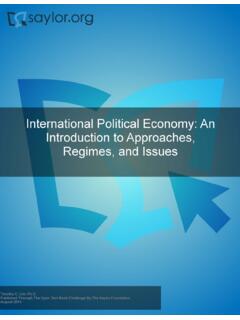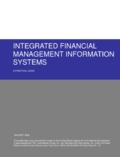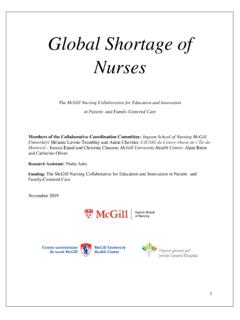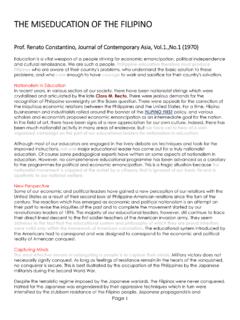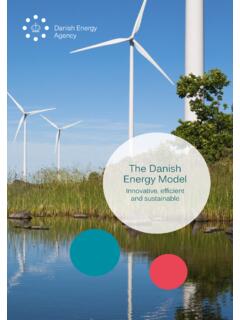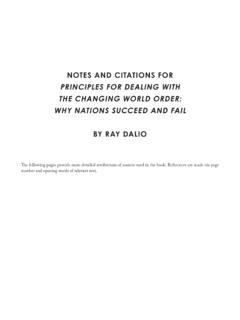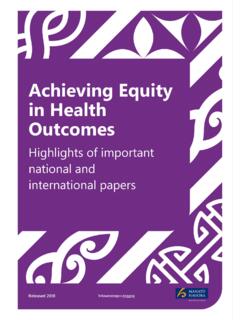Transcription of The Heartland Theory and the Present-Day Geopolitical …
1 The Heartland Theory and the Present-Day Geopolitical Structure of Central Eurasia The Planet s Pivot Area in Mackinder s Theory The Geopolitical situation of the early 21st century gave a new boost to studies of the regional structuralization principles for the Geopolitical and geo-economic space of the entire Eurasian This revived the conceptions formulated by Halford Mackinder in the early 20th century and his opponent, Nicholas Spykman, somewhat later. They offered very original approaches to the regional Geopolitical structuralization of the Eurasian continent and the identification of the functional value of its spatial segments. Mackinder interpreted the world historical processes based on the idea that the world was inherently divided into isolated areas each of which had a special function to perform. He asserted that the European civilization was the product of outside pressure.
2 His account of Europe and European history, regarding it as the result of many centuries of struggle against invasions from Asia, proceeded from the same He believed that Europe s advance and expansion was stimulated by the need to respond to the pressure coming from the center of Asia. Accordingly, it was the Heartland (where the continental masses of Eurasia were concentrated) that served as the pivot of all the Geopolitical transformations of historical dimensions within the World Island. 1 For example, Brzezinski, The Grand Chessboard; Svante E. Cornell, Geopolitics and Strategic Alignments in the Caucasus and Central Asia Perceptions, Journal of International Affairs, Vol. IV, No. 2 (1999), pp. 100-125; Darabadi, Central Eurasia; Dugin, Osnovy geopolitiki; Ismailov and Esenov, Central Eurasia in the New Geopolitical and Geo-Economic Dimensions; Laruelle, Pereosmyslenie imperii; Panarin, Evraziyskiy proekt v mirosistemnom kontekste [The Eurasian Project in the World Systemic Context], Vostok, No.
3 2 (1995), pp. 66-79; Andrei P. Tsygankov, Pathways after Empire: National Identity and Foreign Economic Policy in the Post-Soviet World (Lanham: Rowman and Littlefield Publishers), 2002. 2 Mackinder, The Geographical Pivot of History. Rethinking Central Eurasia 85He pointed out that the Heartland was in the most advantageous Geopolitical location. Aware of the relative nature of the conception central location, Mackinder pointed out that in the context of the global Geopolitical processes, the Eurasian continent is found in the center of the world, with the Heartland occupying the center of the Eurasian continent. His doctrine suggested that the Geopolitical subject (actor) that dominated the Heartland would possess the necessary Geopolitical and economic potential to ultimately control the World Island and the planet. According to Mackinder, a retrospective analysis of military- political and socioeconomic processes in the Heartland revealed its obvious objective Geopolitical and geo-economic He pointed to the pivotal nature of the vast Eurasian region: inaccessible to sea-going vessels, but an easy target for the nomads in antiquity.
4 Mackinder was convinced that Eurasia possessed sustainable conditions for the development of military and industrial powers. When structuring the Geopolitical expanse in the form of a system of concentric circles, Mackinder conventionally placed the Pivot in the planet s center, which included the river basins of the Volga, Yenisey, Amu Darya, Syr Darya, and two seas (the Caspian and the Aral).4 This Pivot was thus all but impregnable to attacks by sea powers, yet was able to sustain large populations itself. The nations that arose from within it depended on horse and camel to negotiate its vast expanses, which gave them the mobility to mount raids on Europe, which could not mobilize in return. 5 For historical and Geopolitical reasons, the Pivot became the natural center of force. Mackinder also identified the inner crescent, coinciding with the Eurasian coastal areas. He described these as the area of the most intensive civilizational development.
5 It included Europe and Southern, Southwestern, and Eastern Asia. There was also the outer crescent, which included Britain, South and North America, Southern Africa, Australasia and Japan, zones geographically and culturally alien to inner Eurasia. He believed that the historical processes were concentrated on the Heartland , territory 3 Halford J. Mackinder, The Round World and the Winning of the Peace, Foreign Affairs, Vol. 21, No. 4 (1943), pp. 595-605. 4 Ibid. 5 Megoran and Sharapova, Mackinder s Heartland , p. 12. Eldar Ismailov and Vladimer Papava 86populated by Turkic tribes whose inroads forced Europe to unite, and the homeland of all the nomadic empires of the Proceeding from the above, Mackinder insisted on preventive measures of various means to remain in control of the situation in the Pivot. One of them consisted of controlling the inner crescent.
6 He put his idea of Eastern Europe as the key to the Heartland in a nutshell by saying: whoever rules East Europe commands the Heartland ; whoever rules the Heartland commands the World-Island; whoever rules the World-Island commands the World. 7 The history of the Pivot, whose conception will be assessed below, suggests that its spatial-functional parameters have been in constant change. Even though the process that took place within the area confirms what Mackinder said about the functional unity of Eastern Europe and the Heartland , the real meaning of the latter does not stem from the imperative nature of Eastern Europe when it comes to control over the Heartland , but from their structural unity. In other words, at all stages of the Heartland s development, especially today, Eastern Europe remains a spatial element of its structure. Its Geopolitical unity is the sine qua non of the Pivot s functional validity on a Eurasian scale.
7 Mackinder s later works support the thesis of Eastern Europe as part of the Within a very short period of time he revised his Theory twice in an effort to adapt it to the changing Geopolitical realities. He readjusted the Pivot (see Fig. 1) and included the Black and Baltic Sea basins (Eastern Europe) in the This means that his famous formula should be 6 Pletniova, Kochevniki srednevekov ia: Poiski istoricheskikh zakonomernostey [Nomads of the Middle Ages: A Search for Consistent Historical Patterns] (Moscow: Nauka Publishers, 1982). 7 Mackinder, Democratic Ideals and Reality, p. 113. 8 Mackinder, The Round World and the Winning of the Peace. 9 He included in Eastern Europe some of the East European states that formed part of the Ottoman Empire (the southeastern European states the Kingdom of Bulgaria, the Hungarian Kingdom, the Rumanian Princedom, the Princedom of Montenegro, the Kingdom of Serbia, Bosnia and Herzegovina, and Macedonia) and of the Russian Empire (the Kingdom of Poland, the Grand Duchy of Finland, the Central (Ukrainian) Rada, the Byelorussian Rada and the governorships of Bessarabia, Lifland, Kourland, and Estland).
8 Rethinking Central Eurasia 87rephrased as: Whoever rules the Heartland commands the World-Island; whoever rules the World-Island commands the World. Figure 1: Halford Mackinder s Pivot in 1904 and 191910 This appeared to be confirmed in the mid-20th century when, after World War II, the Soviet Union expanded its domination zone westwards. COMECON and the Warsaw Pact meant that the classical Heartland merged with Eastern Europe. They disintegrated along with the Soviet Union at the turn of the 1990s, giving rise to new Geopolitical and geo-economic conditions in the World-Island. This did not, however, set Eastern Europe apart from the Heartland . The Geopolitical transformations of the late 20th century isolated Russia as a Eurasian Geopolitical subject in the northeastern part of the continent and narrowed down the Pivot in its central part, that is, in three relatively independent regional segments of the latter Central (Eastern according to Mackinder) Europe, the Central Caucasus, and 10 The map is borrowed from (Megoran and Sharapova, Mackinder s Heartland , p.)
9 9). Eldar Ismailov and Vladimer Papava 88 Central Asia. To be more precise, the main relatively altered functions of the Heartland concentrated in the newly emergent spaces of its system-forming segments. This launched another cycle of their integration and revival as a whole Early in the 20th century (during World War I) and in the latter half of the same century, the Geopolitical logic created first by the domination of the Ottoman and Russian empires and later by the Soviet one in Eastern Europe suggested a division into Western Europe (the countries outside the Ottoman and Russian/Soviet domination zones) and Eastern Europe (the countries completely dominated by the Ottoman and Russian/Soviet empires). The Geopolitical logic created by the disintegration of the empires and Russia s isolation in the northeastern part of Eurasia excluded the former COMECON countries and post-Soviet countries from the East European expanse (with the exception of Russia s European part).
10 The isolation of the last Eurasian Geopolitical subject and its domination sphere in the northeast of the European continent, first, shifted the Pivot from the continent s north to the center; and thus, called for conceptual changes. Indeed, that part of Europe s political expanse controlled by the last empire (the Soviet Union) should be identified as Central Europe and then included in the contemporary Pivot (Central Eurasia), while Russia, as part of the World-Island that occupies Eastern Europe and Northern Asia, should be described as a Northern Eurasian Power. In this context Turkey, which is located in the southern parts of the East Europe and West Asia, becomes the Southern Eurasian Power. Spykman also paid much attention to the role of the Pivot of the Eurasian continent in world He relied on what Mackinder wrote before him to produce his own version of the basic Geopolitical model.
